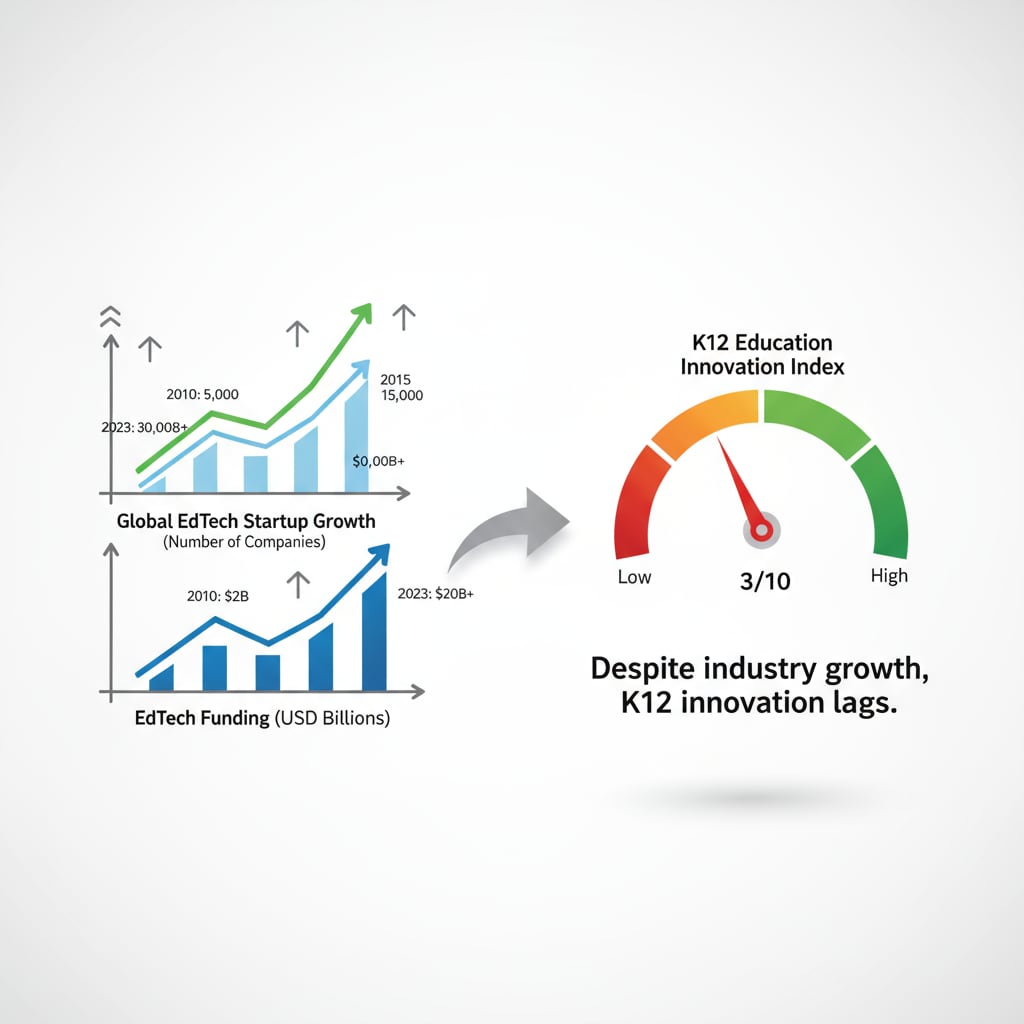In the modern era, the concepts of education innovation, edtech, and digitalization have become buzzwords in the K12 educational landscape. However, a closer look reveals that beneath the surface of technological advancements, there is a disconcerting lack of true innovation.

The Illusion of Innovation in K12 EdTech
Today, the K12 education technology sector appears to be booming. Countless apps, online platforms, and digital tools flood the market. Yet, much of what is touted as innovation is merely a digital repackaging of traditional educational content. For example, many e-learning platforms simply transfer textbooks and lectures onto the screen. This shift from paper to digital does not necessarily equate to educational innovation. As Wikipedia’s page on Education Technology states, true innovation in education should involve fundamental changes in teaching methods, learning experiences, and educational goals.

The Root Causes of Innovation Stagnation
One major factor contributing to the lack of innovation is the focus on profit in the edtech industry. Many companies are more concerned with quick returns on investment rather than long-term educational impact. This leads to a rush to market with products that are not truly innovative. Additionally, the traditional education system’s resistance to change plays a role. Teachers and administrators are often accustomed to established teaching methods and may be reluctant to embrace new digital approaches. According to Britannica’s entry on Education, the inertia within the educational establishment can hinder the adoption of innovative ideas.
Another cause is the lack of a comprehensive understanding of educational needs. Developers may create digital tools without fully considering the diverse learning styles and requirements of students. This results in products that do not effectively engage learners or enhance the educational experience.
Readability guidance: The above sections break down the issues with short paragraphs. The use of examples and external links adds credibility. Transitions like “however”, “for example”, and “additionally” are used to connect ideas smoothly.
The Path to Genuine Educational Innovation
To achieve real educational innovation in the K12 sector, a multi-faceted approach is needed. First, there should be a greater emphasis on research and development. Edtech companies and educational institutions should collaborate to understand the true needs of students and develop solutions that address these needs. For instance, personalized learning platforms that adapt to individual students’ learning paces and styles could be a game-changer.
Second, professional development for teachers is crucial. Teachers need to be trained in the effective use of digital tools and innovative teaching methods. This will enable them to integrate technology seamlessly into the classroom and create more engaging learning experiences.
Finally, a shift in educational culture is necessary. There should be a greater acceptance of risk and experimentation in education. Only by being willing to try new approaches can we break free from the shackles of traditional education and embrace true innovation.
In conclusion, while digitalization has brought about significant changes in K12 education, it has not necessarily translated into true innovation. By addressing the root causes of innovation stagnation and pursuing the paths outlined above, we can hope to see a more innovative and effective educational landscape in the future.


